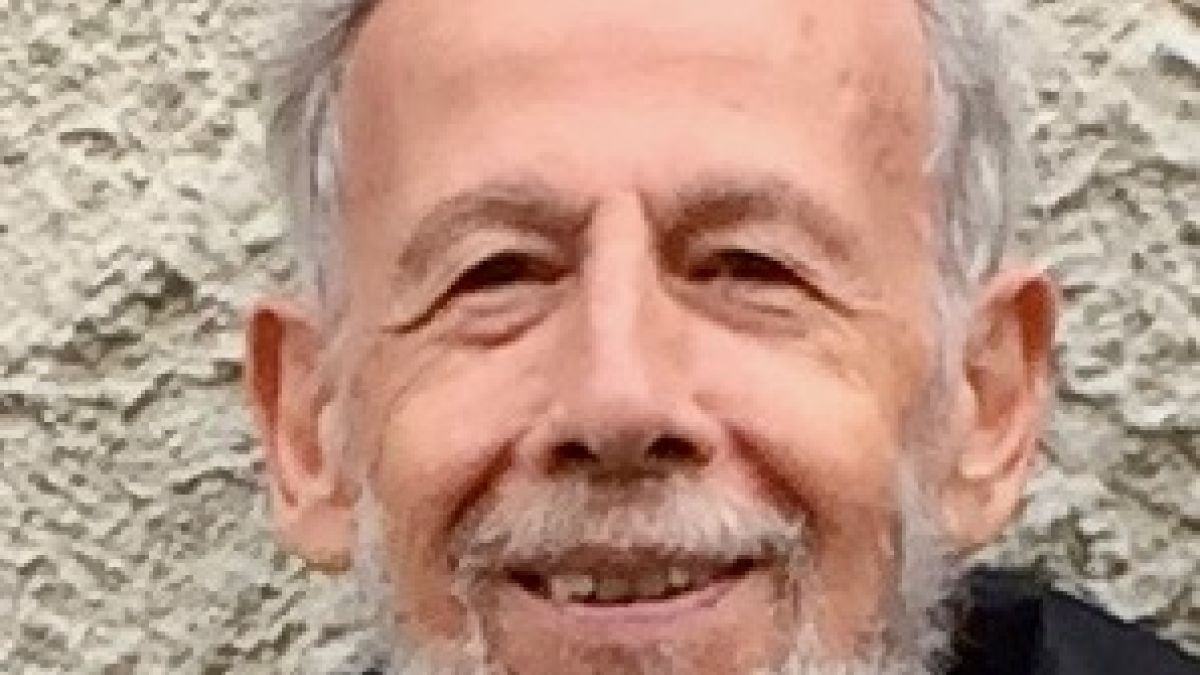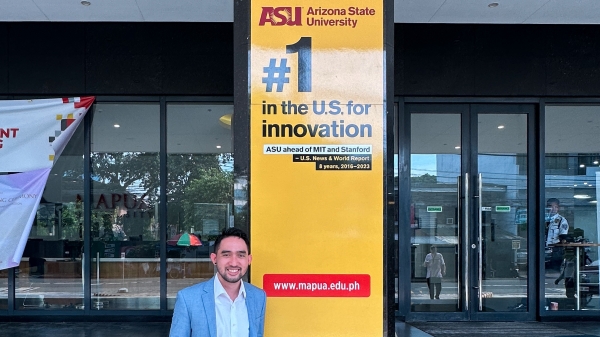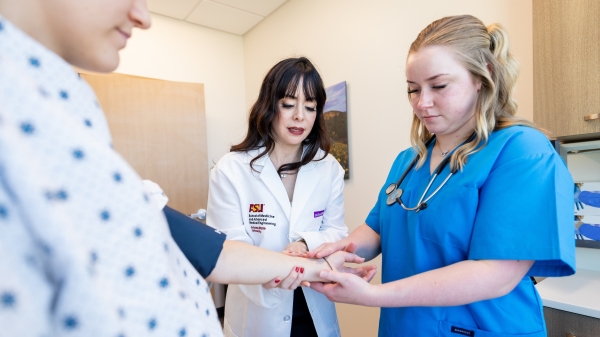ASU Regents Professor receives prestigious award for excellence in aerosol research, technology

ASU Regents Professor Peter Buseck, recipient of the 2021 AAAR David Sinclair Award.
Arizona State University Regents Professor Peter Buseck is the 2021 recipient of the David Sinclair Award from the American Association for Aerosol Research (AAAR), the leading international scientific research organization for the study of aerosols, with emphasis on atmospheric chemistry. This significant honor recognizes the sustained excellence of an active, established scientist who has made a lasting impact in aerosol research and technology throughout their career.
Aerosols, which prominently include tiny solid particles and droplets of liquids suspended in the air, play important roles in a wide range of processes, from an individual’s respiratory health to local weather and global climate.
Air pollution in Phoenix, together with the desire to work on societally important research, provided the occasion for Buseck’s entry into atmospheric chemistry research in the late 1960s. Together with new PhD student John Armstrong, Buseck performed the first quantitative chemical analyses of individual aerosol particles using an electron microprobe coupled with careful modeling. Their work, initially funded by the Arizona Lung Association, identified types and sources of local atmospheric contaminants.
Buseck, with doctoral students Gary Aden, Jeff Post and John Bradley, further refined their techniques to characterize aerosol particles, as well as identifying previously unrecognized atmospheric particles. With funding from the National Science Foundation, Buseck and his research group conducted research across the United States, Mexico, South America, Africa and China, as well in the North Atlantic and Southern oceans. Their research contributed to the understanding of the role of solid particles in atmospheric processes and Earth’s climate.
“We were the first to study individual atmospheric particles with high-resolution transmission electron microscopy,” Buseck said. “We were able to show that tiny individual particles have a level of complexity that can reveal how they formed, where they formed and, to some extent, their reactions in the atmosphere, as well as their optical properties. These properties determine how they absorb, reflect and scatter light and other electromagnetic radiation that contributes to heating and cooling of the atmosphere.”
More recently, Buseck has studied the role of wildfires in the formation and distribution of tarballs, which his group discovered during an integrated research campaign focused on southern Africa, and other aerosol particles in the atmosphere downwind of wildfires.
“We are able to track these particles and see how their optical properties change as they age and evolve,” Buseck said. “Particles from wildfires affect cloud formation and climate by introducing large amounts of particles into the air, and of course this also affects people and animals who are breathing the air.”
Buseck holds joint faculty appointments in the School of Molecular Sciences and the School of Earth and Space Exploration, and he is also a renowned scientist in solid-state geochemistry, mineralogy and cosmochemistry, pioneering the use of transmission electron microscopy to study minerals, meteorites and aerosol particles at close to the atomic scale. For his work, Buseck has been honored with the Roebling Medal from the Mineralogical Society of America for outstanding original research in mineralogy and with the ASU Graduate College Outstanding Graduate Mentor Award, and he has been named a Graduate College Distinguished Research Fellow.
Buseck has had visiting appointments at Oxford and Stanford universities, the University of Paris and Harvard University. He was assistant to the director of the U.S. National Science Foundation from 1994-95. He is a fellow of the American Association for the Advancement of Science (elected 1967), the Geological Society of America (1959), the Meteoritical Society (1965) and the Mineralogical Society of America (1963). He is a Regents Professor and a sustainability scientist.
“The research of Peter Buseck and colleagues on airborne minerals and related aerosols is as important today as it was at the beginning of their research in the ’60s and ’70s when they studied air pollution in the Phoenix area,” said School of Molecular Sciences Director Tijana Rajh. “Buseck applied a molecular science approach to understanding the formation and role of airborne particles, and this was crucial for finding new relationships between particles, clouds and ultimately storms, thus refining existing approach to creating climate models.”
Buseck was selected by a committee of his peers for this award, which will be presented during the AAAR 2021 Annual Conference on Oct. 18–22. The award memorializes David Sinclair, one of aerosol science's great innovators, known for his knowledge, ingenuity and energy. Sinclair distinguished himself as a pioneer in aerosol science through his work with Victor LaMer at Columbia University.
“This award has special meaning for me because it is for work in atmospheric chemistry, air quality and climate impact that my students, postdocs and I have been doing for many years, but in subject areas that are greatly different from my geology and mineralogy background,” said Buseck. “It thus feels doubly satisfying to receive this acknowledgment from scientists in a totally different field (who recognize) that our work is significant and is having an impact.”
Director of the School of Earth and Space Exploration Meenakshi Wadhwa said, “Professor Peter Buseck’s work has been hugely influential in understanding the chemistry, mineralogy and crystallographic structures of terrestrial and extraterrestrial materials. Although his work has spanned these broad fields, it is wonderful to see him be recognized particularly for his contributions to aerosol research, which has significant implications for climate science and human health.”
Written by Karin Valentine, media relations and marketing manager at the School of Earth and Space Exploration, and James Klemaszewski, science writer for the School of Molecular Sciences.
More Health and medicine

Linguistics work could improve doctor-patient communications in Philippines, beyond
When Peter Torres traveled to Mapúa University in the Philippines over the summer, he was shocked to see a billboard promoting…

Turning data into knowledge: How Health Observatory at ASU aims to educate public
This is how David Engelthaler described his first couple of months on the job as executive director of the Health Observatory at…

HonorHealth named primary clinical affiliate for new ASU School of Medicine and Advanced Medical Engineering
Arizona State University and HonorHealth, a locally owned nonprofit health system, announced today that they have finalized an…